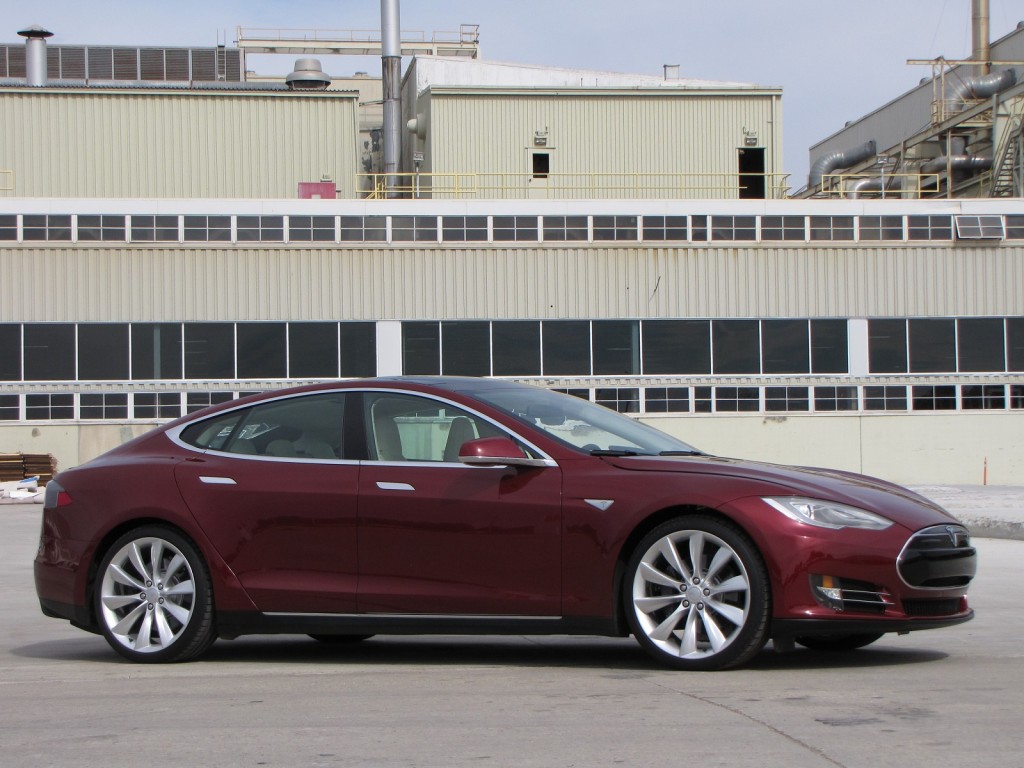Electric-car makers don't normally draw comparisons with dystopian autocracies.
But as five states compete to host Tesla Motors' massive battery "Gigafactory," some are comparing the contest with a certain fictional "sporting" event.
Welcome to the "Tesla Hunger Games," complete with its own logo and Twitter hashtag.
DON'T MISS: Tesla's Lithium-Ion Battery Gigafactory: What You Need To Know
The comparison stems from the concerns of policy analysts and citizens who believe the states are engaged in a "race to the bottom" to get the factory--with Tesla the only possible winner.
In an open letter, budget watchdogs from the five states--Arizona, California, Nevada, New Mexico, and Texas--say the competition for the gigafactory amounts to a "public auction," with the opening bid set at $500 million.
Tesla previously indicated that it expects the winning state to offer at least that amount--10 percent of the gigafactory's estimated total cost--in incentives.
Project Tiger site at USA Parkway Business Park, Reno--for Tesla gigafactory? [photo: Bob Tregilus]![Project Tiger site at USA Parkway Business Park, Reno--for Tesla gigafactory? [photo: Bob Tregilus] Project Tiger site at USA Parkway Business Park, Reno--for Tesla gigafactory? [photo: Bob Tregilus]](https://images.hgmsites.net/lrg/project-tiger-site-at-usa-parkway-business-park-reno--for-tesla-gigafactory-photo-bob-tregilus_100474266_l.jpg)
With economic growth remaining slow, states appear eager to pony up that amount--and possibly more--to secure the 6,500 manufacturing jobs the factory is projected to create.
Manufacturing jobs are more desirable for states because they generally pay more than service-industry jobs.
However, the analysts suggest that spending money on a single Tesla project would produce lower long-term jobs than spreading it around to many different projects.
ALSO SEE: Tesla's Battery Gigafactory May Achieve Nirvana: $100 Per Kilowatt-Hour, Report Says
The signers, led by Good Jobs First--an advocacy group based in Washington, D.C.--claims states risk devoting too many resources to luring Tesla, at the expense of other necessary investments (like infrastructure and education) that more broadly benefit the economy.
Concerns that states will sell out to attract the gigafactory have been particularly loud in California.
In addition to planning generous subsidies, lawmakers have proposed waiving environmental rules to speed up the process. However, Tesla has said it does not want these exemptions, according to reports in the San Jose Mercury News.
2012 Tesla Model S beta vehicle, Fremont, CA, October 2011
The authors of the open letter also condemn the practice of lawmakers crafting these incentive packages behind closed doors, with no opportunity for public input.
They call for a public, transparent negotiating process, a set of strict performance standards, and money-back guarantees from Tesla if they are not met.
Rather than have the five states compete, the group also calls for a cooperative effort "across state lines" to make a deal.
MORE: Tesla Battery Gigafactory: Speed, Incentives, Power-Line Proximity Crucial
Tesla hasn't publicly responded to the letter yet, but it has said it must begin gigafactory construction soon.
The factory needs to be running at full capacity by 2017, when Tesla plans to launch its third-generation Model 3 electric car.
The smaller sedan's $35,000 base price relies on a less expensive lithium-ion battery built in high volumes that only the gigafactory can provide.
[hat tip: Brian Henderson]
_______________________________________________












